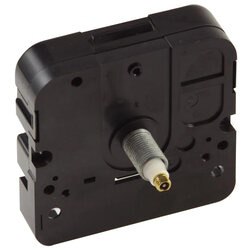
Modern-Day Electronic Clock Movements
Clock movements are, in a sense, the vital organs of watches, keeping an eye on passing time and also pointing the hands to the right position on the dial continuously. Digital clock movements do these functionalities via electric means as opposed to with the mechanical means of times previous. Furthermore, electronic devices makes it much easier than technicians to expand timekeeping ability and other attributes, including extending the regular cycle displayed.
Nonetheless, mechanical clock movements carry a lengthy custom and history with much development, and they are the structure upon which contemporary wrist watches are developed. Mechanical power was generated by a hanging weight or a coiled springtime, and also it exerted the rotational force used to place the hands at the appropriate moment (with the help of pendulums and escapement systems). This worked well and with precision, however the parts were large and had to be occasionally reset.
The contemporary electric motor style utilizes electromotive force (voltage) to create a quartz crystal to produce a rapid pulse-stream, removing most of the mechanical components. Digital registers build up pulse counts, as well as software program tracks these registers in figuring out when to activate modifications in hand position. No pendulums or escapements are required to regulate the timing.
The above covers standard timekeeping for both mechanical and electronic movements. We now count on the bells as well as whistles (time expansions, weather sensations, and uniqueness) that digital electric motors are conveniently capable of, however which mechanical ones might or may not have the ability to implement.
The pre-owned generally goes unnoticed– unless the wrist watch is in the bed room (or collection). The traditional activity is a tick (as the hand progresses to the following mark) and then rest, and the tick is normally distinct. Nevertheless, you can obtain a clock movement that supports a continual sweep (as well as entirely silent) used.
The most common clock cycle is 12 hours (the screen equals for noon and midnight). However you can get an electric motor that cycles every 24 hr rather (requiring you to buy a calibrated dial likewise). To distinguish day hrs from night, the dial presents an extra dozen numbers around its area; the numbers show up either in sets or expanded, to make sure that the hour hand revolves once daily instead of two times.
Now, you can additionally have a cycle much longer than 24 hr– assume a week or month. For the previous, the specially calibrated dial has 7 areas in the center with a different day of the week printed in each. An added hand indicate the day, rotating to the next day at twelve o’clock at night.
For the regular monthly cycle, there are 31 “days” published around the circumference, intermingled with the numbers showing the hours. (Various colors and/or different radiuses are utilized to differentiate quickly.) Below, the added hand is roughly the same size as the minute hand, and also rotates to the next day at twelve o’clock at night.
The way a movement is made it possible for to display weather condition sensations (humidity, pressure, temperature level) is by using sensors. The dial reveals a variety with two ends (an optimum as well as minimum worth), and also the solitary hand revolves within the variety based on the existing analysis of the sensing unit.
A couple prominent novelties are chimes (appearing various familiar tunes) and aesthetic pendulums. The timing of the motor manages the triggering of the chimes, typically once a hr, sometimes every quarter hr, as well as occasionally adhering to the hr chime with an hour count. Non-functional pendulums that oscillate just for program, supply a sort of fond memories and/or fake credibility to the watch. clock parts
The clockmaker these days has a lot more adaptability in making and also constructing intriguing and also breathtaking jobs. Loosened from the constraints of the old mechanical timepieces, the opportunities seem unlimited. This all transpires with the advancement of contemporary digital clock movements.